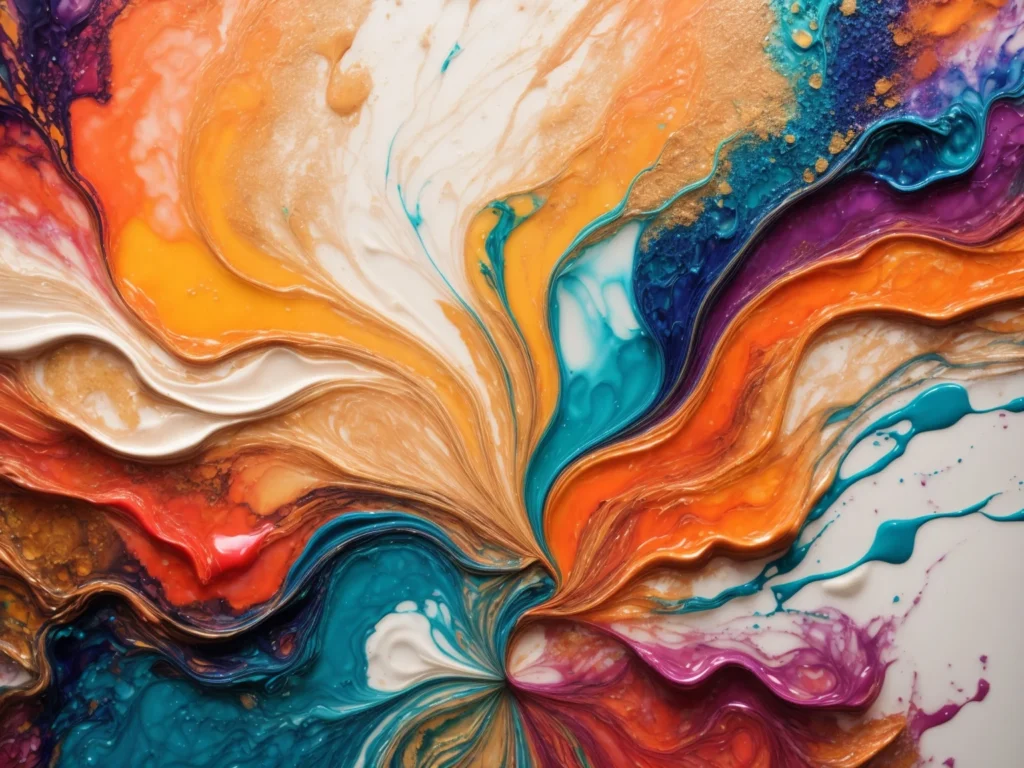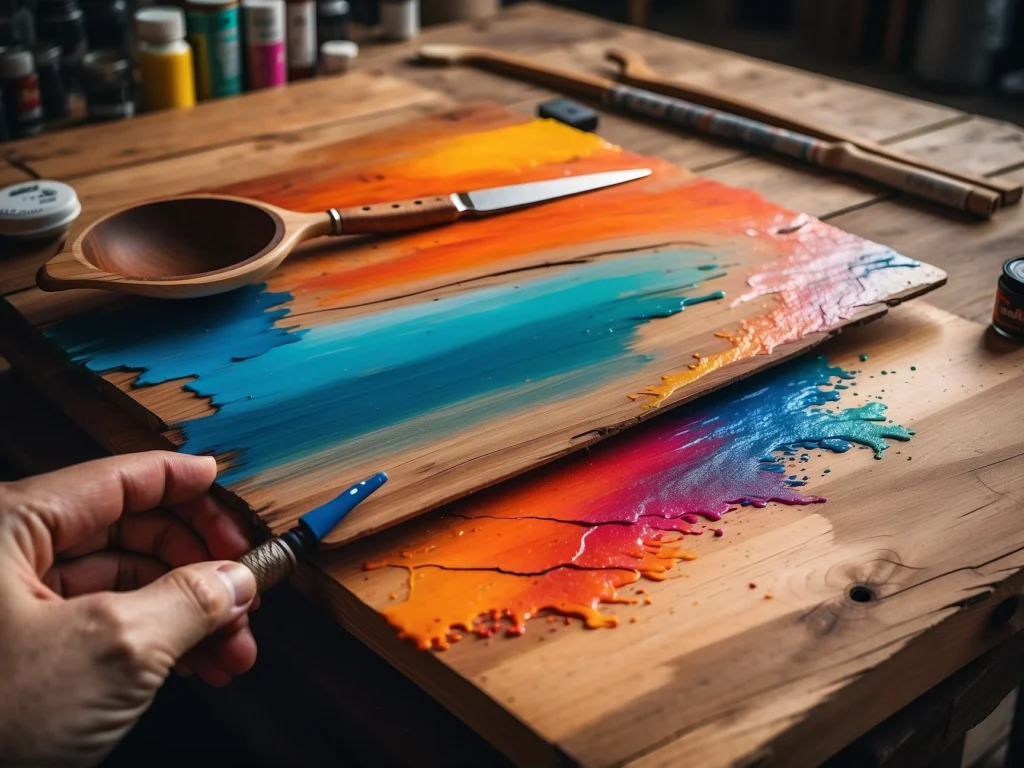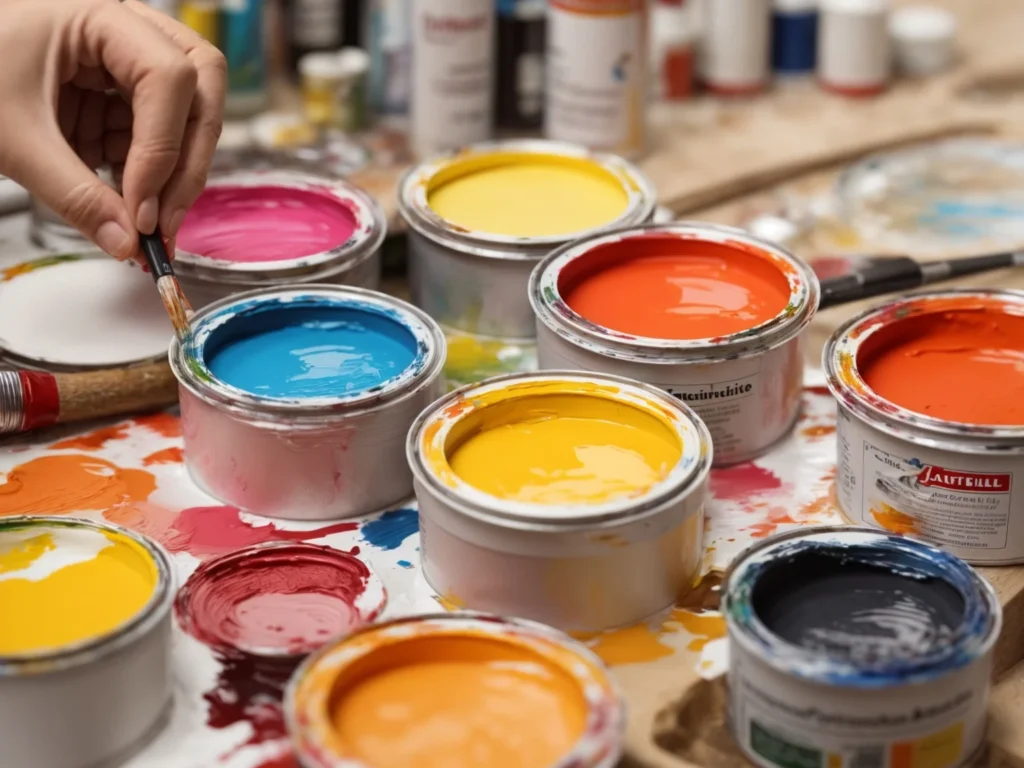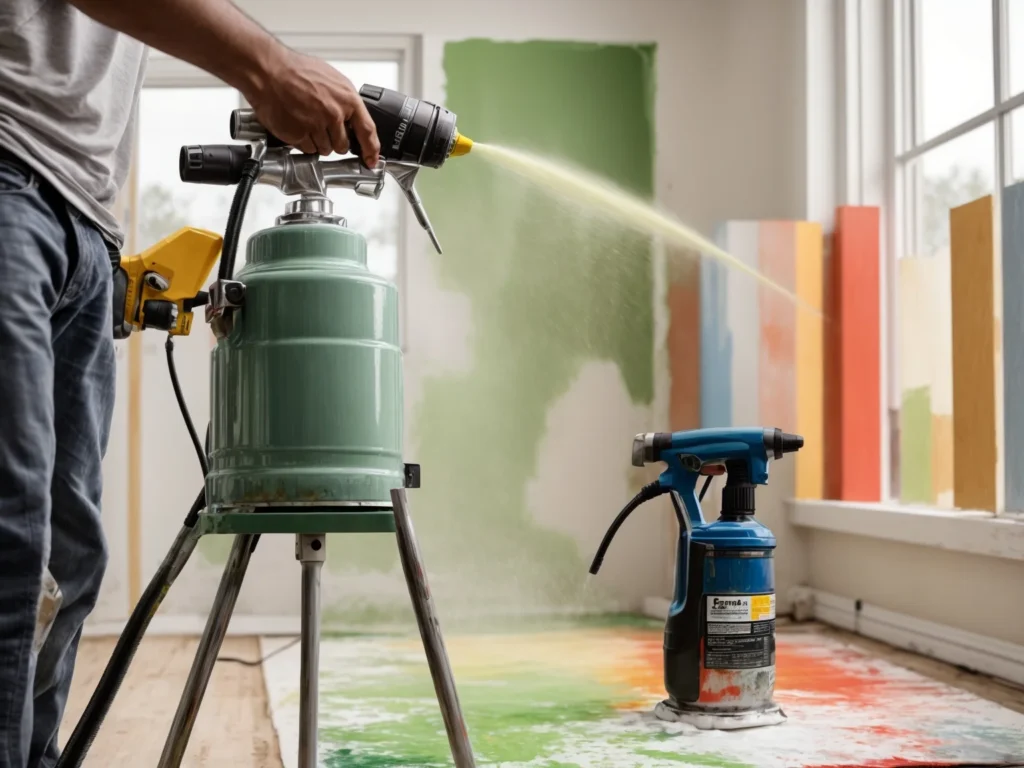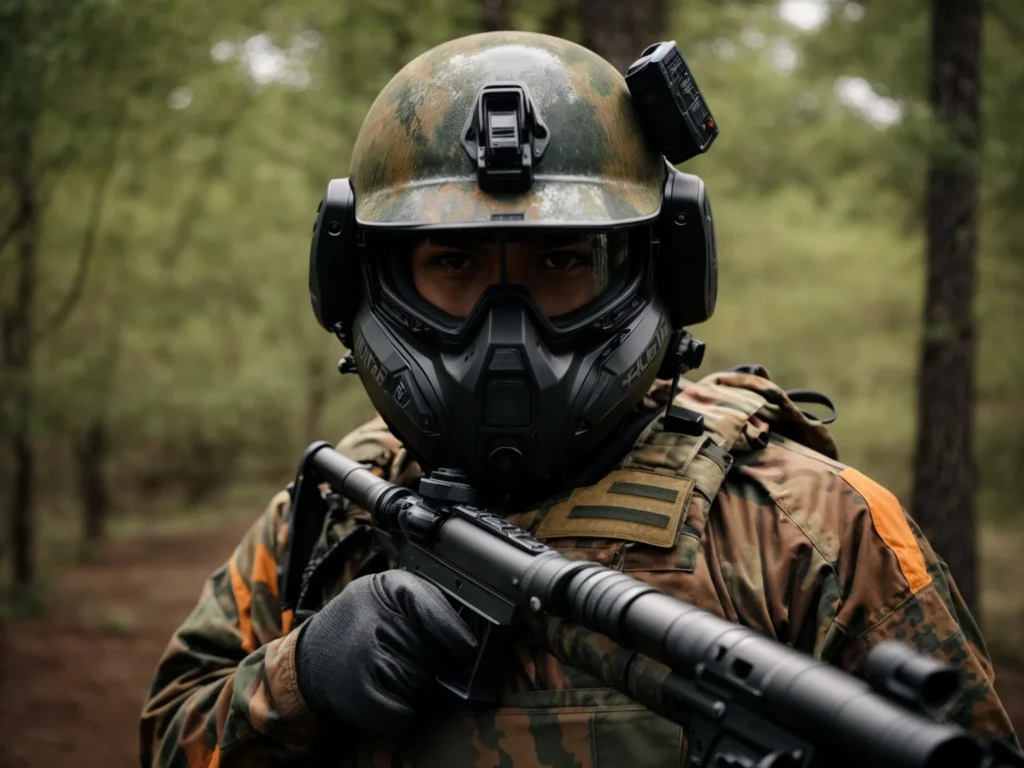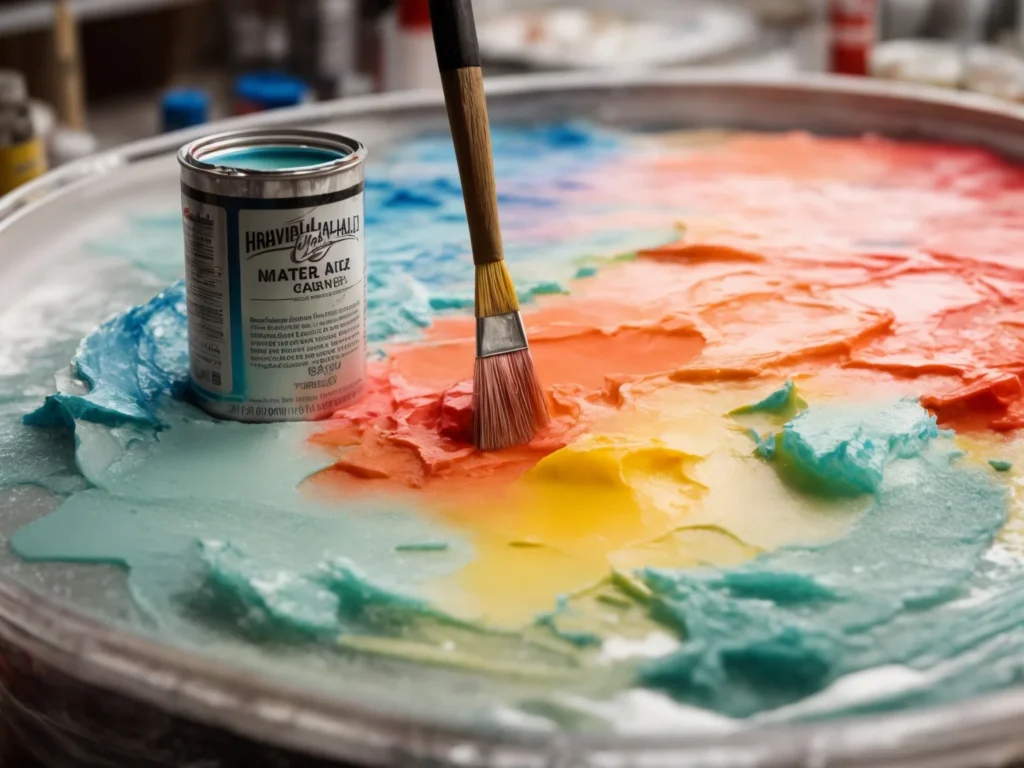Butyl tape, also known as butyl rubber sealant tape, is a popular adhesive and sealant used in automotive, construction, HVAC and other applications. It creates a flexible, watertight seal between two non-porous surfaces.
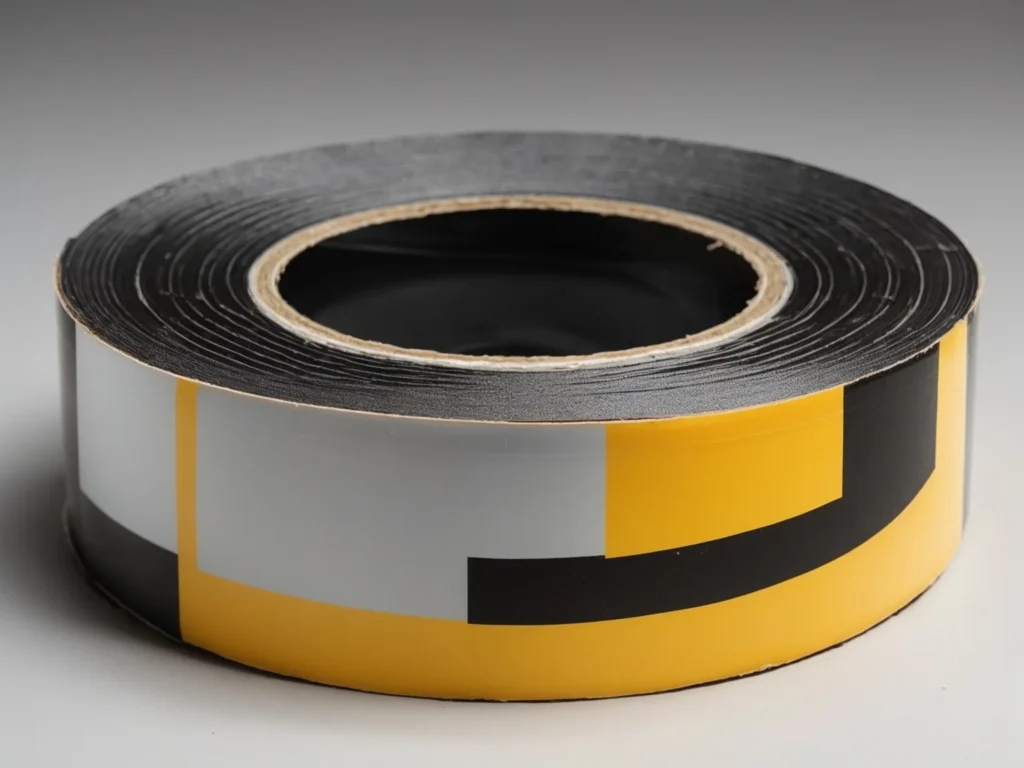
But in some cases, you may want to paint over the butyl tape to hide it or match the surrounding surface. Since butyl has a rubbery texture, you can’t just paint over it like other tapes. Specific preparation and paints are required for proper adhesion.
Butyl Tape
Butyl tape is a putty-like modeling clay that is easily pliable and moldable before application. Once applied and pressed firmly into place, the oils in the butyl cure to create a permanently flexible rubber seal.
Key properties and uses of butyl tape include:
- Adhesion – Butyl bonds tenaciously to clean glass, metal, composite and some plastic surfaces. The cured tape remains permanently sticky.
- Flexibility – It can stretch and compress while maintaining a seal. This allows it to accomodate vibration, expansion and contraction.
- Waterproofing – The tape provides a watertight, airtight seal by filling gaps and voids. It protects against leaks.
- UV resistance – Butyl holds up better than many tapes when exposed to sunlight and ozone, though not as well as silicone.
- Automotive uses – Sealing windshields, body seams, lights, wheel weights, emblems, and more on vehicles.
- Construction – Sealing joints in metal roofs, gutters, RV exterior, windows and other building applications.
- Insulation – Used to seal gaps in ductwork, electrical boxes, and insulation facings. Prevents air leaks for efficiency.
So butyl tape excels at flexible sealing and bonding where a permanent, watertight adhesive is needed. However, it does leave a visible gray or black seam that may need to be hidden by painting over it.
Can You Paint Over Butyl Tape?
Butyl tape can be painted over, but it requires specific preparation and paints to get proper adhesion. The main steps are:
- Allowing full cure time
- Scuffing the surface
- Using compatible paints
- Testing adhesion
The rubbery, flexible texture of butyl tape prevents standard paints from bonding. But with the right approach, butyl’s excellent sealing can be combined with a painted finish.
Waiting for Butyl Tape to Fully Cure
Fresh butyl tape immediately seals, bonds and is waterproof upon application. However, the butyl takes 1-3 weeks to fully cure depending on temperature and humidity.
During the curing period, the oils and plasticizers in the tape transition from a sticky, pliable state to the permanently flexible, elastic rubber sealant.
It’s crucial to allow full cure time before painting. If you paint too soon, the oils will prevent proper paint adhesion leading to peeling, flaking and failure.
Cooler temperatures below 70°F (21°C) lengthen the curing period. Temperatures under 50°F (10°C) can double or triple the normal 1-3 week cure time.
Test a small painted area after 2-3 weeks to confirm the butyl tape is fully cured and ready for painting. If the paint doesn’t adhere or is easily scratched off, allow more cure time.
Scuffing the Butyl Surface
For maximum paint adhesion, it’s recommended to lightly scuff or sand the surface of the cured butyl tape. This roughens the smooth rubber texture allowing paint to mechanically bond.
Use 120-150 grit sandpaper to lightly scuff and dull the butyl surface without damaging the tape. Remove any dust or residue after scuffing.
You can also use a primer designed for rubber and plastic to improve bonding and paint adhesion. Scuff the surface first before applying a compatible primer.
Using Compatible Paints
The biggest challenge with painting over butyl sealant tape is finding a paint that properly adheres to the rubber.
Standard oil-based and latex paints don’t flex enough to bond to the elastic tape as it expands and contracts. The paint will crack and peel.
Water-based acrylic latex paints are generally the best choice for painting over butyl. Avoid standard exterior latex house paints as they are usually too rigid. Look for paints labelled as elastomeric or specifically for use on rubber and plastic.
If possible, use a paintable butyl tape instead. These specialty tapes have a fleece backing designed to accept any water-based or oil-based paint once fully cured. 3M, Berry Plastics and other brands offer paintable butyl options.
Other paint considerations for butyl tape:
- Solvent-based paints – Oil-based paint, automotive paint, acrylic enamels and other solvent-based products can interact poorly with the butyl rubber. They should be avoided.
- Epoxy paint – Two-part epoxy paints and coatings can also be used as long as they are flexible enough when cured. Test adhesion first.
- Cure time – Regardless of paint type, allow 1-3 weeks of cure time before painting over butyl sealant tapes.
- Thin coats – Apply paint in 2-3 thin, even coats for better flexibility and adhesion rather than one thick coat.
Always test paint compatibility on a small section of butyl first. Make sure it fully cures and adheres before painting the entire surface.
Testing Paint Adhesion
To ensure the paint is compatible with the specific butyl tape on your surface, always do a test patch first.
Follow these steps for testing adhesion:
- Allow 1-3 weeks for the butyl tape to fully cure.
- Lightly scuff a small section of butyl with 120-150 grit sandpaper.
- Apply the chosen paint in a thin coat over the scuffed area according to the manufacturer’s instructions.
- Let the paint fully cure as specified on the label, usually 24-48 hours.
- Use a utility knife to cut an X or crosshatch pattern through the paint and gently lift up on the center with a fingernail.
- If the paint sticks firmly without any lifting or peeling, it has good adhesion and can be safely used.
- If the paint easily peels and lifts off, it is incompatible and a different paint should be tested.
Be sure to test every new paint, even if it’s the same type that worked previously. Differences in formulations mean adhesion could vary.
Testing first avoids having the paint fail after completing the full job. It also indicates whether additional prep or priming is needed for that specific application.
Prep Tips to Improve Adhesion
If initial paint tests show poor adhesion on the butyl tape, try these prep tips before switching to a different paint:
- Allow tape to cure for the full 1-3 weeks recommended
- Clean the surface thoroughly with rubbing alcohol
- Use extra coarse 100-grit sandpaper to create an evenly roughened profile
- Wipe with alcohol again after scuffing to remove any oils
- Apply a plastic primer designed for maximum bonding
- Add a layer of paintable butyl tape over the existing to provide a fleece backing
Proper prep is key to achieving good adhesion. Make sure to follow the manufacturer’s recommendations and allow adequate time for both tape cure and paint cure.
Painting Over Butyl: Step-by-Step
Once you have tested and confirmed paint compatibility with the surface, follow these best practices for painting over butyl sealant tape:
Prep
- Allow 1-3 weeks for full butyl tape cure time.
- Lightly sand or scuff surface with 120-150 grit sandpaper.
- Clean area thoroughly with rubbing alcohol and lint-free cloth.
Paint
- Apply first thin, even coat of paint. Allow to fully dry.
- Apply second coat for good coverage and adhesion.
- If needed, add third coat for uniform appearance and durability.
- Allow each coat to fully cure according to paint directions before adding next coat.
Maintain
- Avoid heavy abrasion or scrubbing painted butyl for first few weeks while paint fully cures.
- Touch up any nicks or damage spots quickly to prevent deterioration.
- Repaint periodically as needed to refresh aging, oxidized paint.
Proper surface prep, compatible paints, allowing full cure time, and recoating when needed are the keys to long-lasting results.
Butyl Tape vs. Silicone Caulk for Painting
Butyl tape and silicone are both commonly used sealants. But how do they compare for paint adhesion?
Silicone 100% silicone caulk has excellent long-term flexibility and UV/sunlight resistance. Paint adheres well to silicone with proper preparation. The main advantages of silicone for painting are:
- Cures quickly within 24 hours. Butyl can take weeks.
- Lower temperature application down to -35°F. Butyl requires above freezing.
- Maintains flexibility and adhesion after years of sun and weather exposure.
- Provides smoother, more uniform surface for painting compared to butyl’s textured finish.
- Accepts a wider variety of paints like latex, epoxy, polyurethane, enamel and more.
Butyl Tape advantages include:
- Much stronger instant grab, adhesion and sealing, especially on non-porous surfaces.
- Functions as both adhesive and sealant in one product. Silicone is sealant only.
- Stays permanently tacky for easy repositioning during application.
- Is more tear resistant than silicone caulk.
- Does not need to be layered thick like caulk to span gaps. Thin tape profiles allow tighter fits.
For most sealing applications that will be painted, silicone caulk is easier to work with and provides better long-term performance.
But for high-strength adhesive bonding to smooth surfaces like glass and metal, butyl tape may be preferred. Proper paint prep must be done.
In general, silicone caulk offers more versatility for painting projects. But butyl tape excels for watertight seals and bonds, as long as it’s coated to hide the surface.
Specialty Paintable Butyl Tapes
To simplify the painting process, you can use specialty butyl tapes designed to accept paints. These feature a bonded fleece backing that paint adheres to after cure.
Popular options include:
3M Paintable Butyl Tape
- Black EPDM rubber adhesive with a white polyester fleece facing.
- Bonds to metal, glass, plastic, composites. Seals quickly.
- Fully paintable in 24 hours with water or oil-based paints. No special prep needed.
Berry Plastics Paintable Butyl Tape
- White or black butyl with polyester fleece backing.
- Strong adhesive seal, easy to apply. Moldable.
- Accepts latex or oil paints after 1-2 day cure.
Tremco Paintable Butyl Tape
- Gray butyl sealant with fleece topping.
- For joints in metal buildings, RV exterior, transportation, HVAC.
- Provides instant seal then paints easily in 24 hours.
These paintable butyl options create a surface nearly identical to painting over typical caulk. Just allow 1-2 days for the butyl to cure, then apply standard paints without special treatment needed. It simplifies the process.
Caulking vs. Butyl Tape: When to Use Each
Butyl tape works similarly to caulk for sealing joints and gaps. But when is it better to use tape instead of caulk?
Butyl Tape Advantages
- Stronger instant adhesion, especially on glass and metal
- Easier to apply in thin, precise beads
- Stays permanently tacky for repositioning
- More tear and puncture resistant
- Does not shrink or crack over time
Silicone Caulk Advantages
- Smoother finish appearance
- Wider temperature application range
- Superior UV and weather resistance
- Paints more easily than butyl tape
- More color options available
General Guidelines:
- Use butyl tape for metal roofing, gutters, RV exterior sealing
- Use butyl tape for bonding emblems, mirrors, panels on vehicles
- Use silicone caulk for exterior sealing of windows, doors, siding
- Use silicone for filling large gaps where butyl tape can’t span
Test both on your specific application to see which offers a better seal and ease of use. Butyl and silicone have distinct strengths.
FAQs
What kind of paint adheres best to butyl tape?
Water-based acrylic latex paints designed for flexibility and plastic/rubber bonding provide the best adhesion and compatibility with butyl tape. Avoid standard rigid paints.
Can you use automotive paint on butyl tape?
Most automotive paints are solvent-based lacquers and enamels that do not properly bond to the oils in uncured butyl rubber. A paintable butyl tape or extremely well-prepped surface would be required.
How long does butyl tape need to cure before painting?
Allow 1-3 weeks for a full cure before painting butyl tape. Cool temperatures below 70°F can significantly lengthen the required cure time.
Should butyl tape be cleaned before painting?
Yes, clean the area thoroughly with rubbing alcohol to remove any oils or residue left from installation. This helps paint adhere directly to the rubber.
Does butyl tape need to be primed before painting?
A primer designed for maximum plastic and rubber adhesion can help paint stick better to butyl tape. Scuff the surface first for the primer to bond mechanically.
Can you paint over butyl tape with spray paint?
Spray paints work but require light scuffing of the butyl first for mechanical adhesion. Let the spray paint cure fully before testing adhesion. Multiple thin coats are better than one thick coat.
What happens if you paint over butyl tape too soon?
The oils in uncured butyl will prevent the paint from properly adhering. Paint applied too soon is likely to peel, bubble or scratch off easily.
Why does paint peel off butyl tape?
Paint peeling is most often caused by painting too soon before the butyl fully cures, using incompatible paints like oil-based, inadequate surface prep, or applying paint too thick.
Conclusion
Butyl tape provides excellent watertight sealing for joints and seams in a variety of applications. With the right preparation and paint choice, it can also be coated to blend in with surrounding surfaces.
The keys are allowing full 1-3 week cure time, scuffing the surface, testing adhesion with compatible paints, and using specialty paintable butyl tape products if available.
Proper painting technique allows butyl tape’s flexibility and strong adhesion to be combined with a color-matched finish. Following the recommendations in this guide will help ensure long-lasting paint performance.
